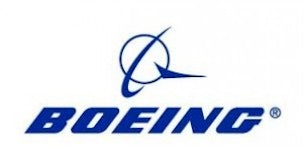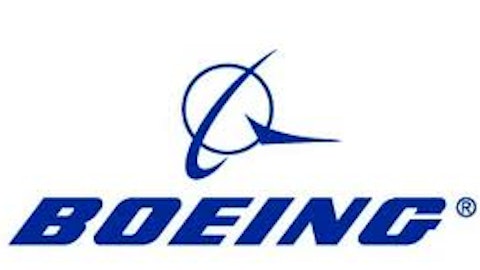
Even European Aeronautic Defence and Space Company agrees with the bullish outlook, and expects to sell 780 to 1,300 large body Airbus aircrafts by 2032.
Why Boeing?
On the basis of FY12 order backlog, Airbus operates with an overall market share of 41% while The Boeing Company (NYSE:BA)enjoys around 59% share. Since Boeing and Airbus operate as a worldwide duopoly, they reap most of the growth prospects. But since Boeing is currently the market leader, it should theoretically benefit the most.
Over the last six months, The Boeing Company (NYSE:BA) has surpassed Airbus in terms of aircraft sales. A major contributor was its 787 Dreamliner, that allows up to 20% fuel savings as compared to the Boeing 767. As compared to its class, the Dreamliner produces 60% less noise and offers up to 30% more baggage space.
Furthermore, its cabin can be fully pressurized at 25% lower altitudes, which will reduce the risks of air sickness at low altitudes. Additionally, a Dreamliner can travel over 15,200 kilometers, which is the longest flight distance in its class.
To cut it short, the Dreamliner is the most efficient and technologically advanced twin-aisle aircraft operating today. Thus, it’s not hard to justify why shares of The Boeing Company (NYSE:BA) have appreciated nearly 45% YTD.
More upside potential
With the rising fuel costs, several airline companies are opting for Dreamliners for long distance routes. Some international airlines even route their aircrafts via Middle Eastern countries, and take advantage of lower fuel costs in the region. It’s worth noting that the commercial aviation industry in India and China is based on a low margin pricing structure. Thus, such cost saving capabilities will boost the profitability of financially crunched airlines operating in the industry.
But despite surging sales, several companies are yet to order their cost saving Dreamliners. In fact, there isn’t a single airline company that operates with a Dreamliner in India. Even China got its first Dreamliner only in May this year. As major airlines gradually shift towards cost efficient aircrafts, smaller airlines will feel compelled to induct fuel efficient airlines to remain competitive.
What about the fires?
Although its battery overheating problems led to the grounding of every Dreamliner around the globe, Boeing was quick to fix the fault, which allowed Dreamliners to resume service sooner than expected. Airlines didn’t bleed as it was expected, which saved Boeing’s reputation and goodwill.
The latest fire in The Boeing Company (NYSE:BA)’s 787 parked in London was feared to have been caused by battery-related problems. The aircraft belonged to Ethiopian Airlines, which operates with four Dreamliners and has six more 787s under development. The street feared that the fire might cause delivery cancellations of 787s, and sent its shares down nearly 5%.
But, Britain’s Air Accidents Investigation Branch found no evidence to suggest that the fire was caused by its battery. And shortly after that, Ethiopian Airlines announced that it will continue to fly its fleet of Dreamliners, and is awaiting the delivery of its six 787s. This was undoubtedly good news for Boeing, following which its shares have recovered most of their lost value.
Since Ethiopian Airlines itself finds little reason to scrap the Dreamliners, I don’t see how other airlines will seek to cancel their pending deliveries. So, let’s move on to The Boeing Company (NYSE:BA)’s competition.
Assessing the competition
Airbus is currently developing its A350, which will directly compete with Boeing’s 787 Dreamliner. Its A350XWB is a wide body, fuel efficient-twin engine aircraft which can travel up to 15,400 kilometers on a full tank. The aircraft featured at the Paris Air Show last month, and management is expecting to receive all the required regulatory approvals within 12 to 13 months.
With its silent and fuel efficient engines (exact figures not revealed), the manufacturer was able to book $21.4 billion worth of orders on the day of its inauguration. It might sound bad news for The Boeing Company (NYSE:BA), but a very important thing should be noted here.
The media wasn’t exactly blown away by the A350XB, as the editor of Flightglobal stated, “Airbus’s initial A350 design wasn’t an entirely new aircraft, but a knee-jerk reaction to the 787.” Besides that, Abu Dhabi-based Etihad cancelled seven of its A350-1000s orders earlier this year, as it was not impressed by the design and functioning of the aircraft. Furthermore, Tunisair also cancelled three of its A350-800s without mentioning the reason behind the move. In my opinion, these facts are good news for Boeing.
Besides that, Bombardier, Inc. (TSE:BBD.B) also announced that it will enter the race for mid-sized commercial jets, hoping to revolutionize the modern day jetliners. The Canadian manufacturer and is renowned for manufacturing business class jets and world class trains, but it doesn’t have the expertise or reputation to manufacture large scale commercial jetliners. Despite that, the manufacturer recently unveiled its 160 passenger CSeries aircraft, developed for a total cost of $3.4 billion.
Final words
Without a proven technological prowess, I don’t think that Bombardier, Inc. (TSE:BBD.B) would be able to make a dent in the commercial aviation industry. However, Airbus’ A350 is an ambitious and technologically advanced aircraft that could give serious competition to The Boeing Company (NYSE:BA). But its latest model is yet to complete its trials and is yet to receive regulatory approvals.
On the other hand, Boeing has a fully operational Dreamliner with technological glitches behind it (hopefully). With all the above mentioned reasons, I think that investing in The Boeing Company (NYSE:BA) is still the best way to capture the growth in commercial aviation industry.
The article How to Profit From the Boom in the Civil Aviation Industry originally appeared on Fool.com.
Piyush Arora has no position in any stocks mentioned. The Motley Fool has no position in any of the stocks mentioned. Piyush is a member of The Motley Fool Blog Network — entries represent the personal opinion of the blogger and are not formally edited.
Copyright © 1995 – 2013 The Motley Fool, LLC. All rights reserved. The Motley Fool has a disclosure policy.



